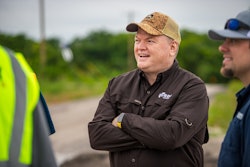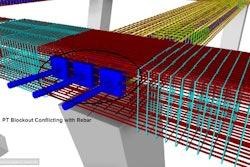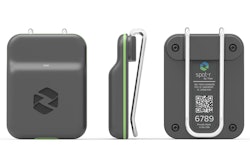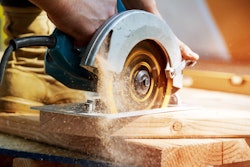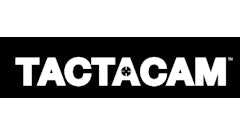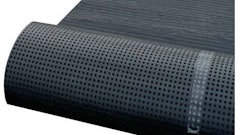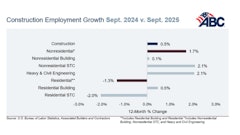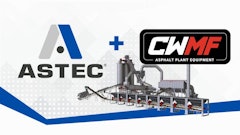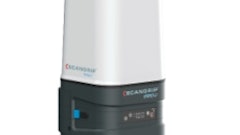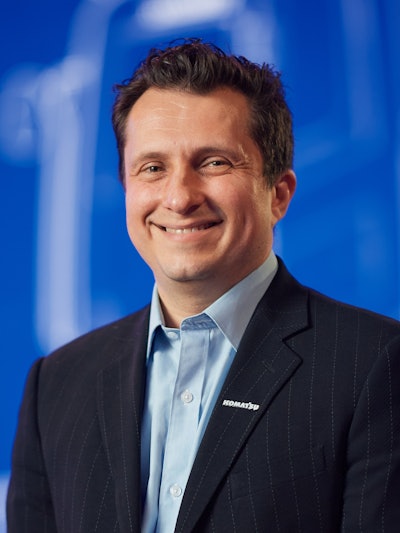
Mike Gidaspow, vice president of products, service & solutions, Komatsu took the time to talk with the Equipment Today team about the construction industry, looking back at 2023 and toward 2024. He discussed how one of the problems with electrification and alternative fuels is the need for infrastructure for these power sources. This Q&A details more of Gidaspow’s thoughts on the industry.
What was the construction industry’s biggest challenge in 2023?
For our customers and distributors, as well as for our company, the biggest challenge in 2023 was undoubtedly workforce related. With low unemployment plus inflation, everyone looked to technology to help bridge that gap by making employees more productive to help drive profitability. The saying that “necessity is the mother of invention” certainly holds true as we continue to develop machines and technology that enable contractors to be as efficient as possible.
To help address workforce challenges, Komatsu continues to develop machines that provide more flexibility. Take our Komatsu family of Intelligent Machine Control 2.0 dozers and excavators: they enable even less experienced operators to become more productive, and they can help our customers do more with fewer employees. Additionally, our line of intelligent excavators eliminates the need for a person to be in the trench to measure grade. That means, a contractor needs one less employee on that job site and can still get the job done.
Another good example of flexibility and efficiency is the advances we’ve seen in hydraulic attachments. The Lehnhoff quick coupler system can turn a hydraulic excavator into a multifunctional tool carrier. With the quick coupler on an excavator and the adapter on the attachments, the Lehnhoff universal interface allows the use of all attachments on different excavator makes. The hydraulic attachments are easily interchanged, and the operator can do so without having to get out of the cab. A traditional quick coupler requires you to get out of the cab to connect your hydraulic hoses. By significantly extending the usage range of excavators, the Lehnhoff quick coupler system transforms excavators into multifunctional equipment carriers for all buckets, grapples or demolition tools.
Are changes in the workforce, including retirements, affecting your company?
I think you’d be hard-pressed to find any company that hasn’t been challenged by the shifts in our workforce. Again, whether it’s our customers, our distributors or our own company, we are all trying to find the right people with the right skills. The difference now is that the low unemployment rate has made the labor market even tighter.
The digital transformation as well as automation can help us develop newer and better ways to be more productive. As we all look to building teams for the future, we need to ensure that our labor force—and the machines and technology that we offer—meet the demands for new skills that will be required for success 20 to 30 years from now. We have a larger focus on training than ever before and this training isn’t only internal, but external for our distributors and customers. We are continuing to provide more and better training on-line, while supplementing that with in-person training. Finally, we are continuing to use data to make better and faster decisions and beginning to use AI to automate some processes that used to be manual.
Is your company still experiencing fallout from the pandemic, including supply chain issues or other problems?
Like all companies across the globe, we ... experienced some challenges as a result of the pandemic. We avidly tried to handle those issues as well as we could, and we continue to strive to improve upon our processes. For the most part, lingering supply chain issues have been resolved. However, there are always new challenges, and our goal is to continue to do our best to stay ahead of those.
We learned many valuable lessons during the pandemic, and two really stand out. The first is the importance of visualizing supply chain issues ... to, ideally, resolve them more quickly. The second and very important thing we learned and continue to implement is the importance of good and frequent communication with both our suppliers and our distributors.
In what technological areas do you see the potential for the most innovation in 2024?
Digital transformation and construction technology will continue to lead the way. By developing technology that is easier for our end-users to adopt, we can create better connectivity to the job site, people, machines and materials.
[Using] technology to instill predictability into operations can help drive greater productivity and efficiency. The key is meeting our customers wherever they are on their technology journey. Komatsu recognizes that each business operation is unique and that finding the right tools is the key to success. We want to ensure that we are providing the support that our customers need.
I think we will also likely continue to see advancements in alternative fuel sources as more customers prioritize carbon neutrality. That should mean advancements in developing equipment that is more environmentally-friendly such as electric machines, hybrids and more fuel-efficient traditional equipment.
What innovations or improvements do you anticipate in construction equipment in 2024?
I expect that we’ll continue to see improvements that drive productivity and better fuel efficiency, with equipment that is more operator-friendly to help address workforce issues. I think that there will be improved enhancements to connect equipment, the office and the jobsite, as well as continued advancements to make equipment operator-friendly—even to novices—to help address workforce issues.
From the fleet management perspective, we’re seeing continued evolution in the visualization of asset utilization to drive further fleet efficiency. Not just understanding equipment idle versus working hours, but also looking at machine to machine interactions with an eye to their actual application on the jobsite. For example, it’s not enough to show that an excavator is idling – we need to enable understanding that the excavator is idling because it’s waiting for trucks to load and that this is the operational bottleneck that needs to be addressed.
Which construction sectors face the most hurdles in the move toward electrification? Alternative fuels? Automation?
The biggest challenge toward equipment electrification is the infrastructure required to charge equipment. Until that is addressed, a predominantly electric fleet is still a way off. Any sector with an eye toward electrification is under intense pressure which is why we are working on developing mobile charging solutions. Alternate charging solutions are particularly important in more remote areas that lack the charging infrastructure.
Alternative fuels can offer a good replacement for traditional fuel, but the cost can be a real issue for our customers.
As for automation, that is tricky on a construction jobsite. We as a company have seen tremendous automation success in the mining industry, where machines do repetitive tasks and sensors on machines support safety. But on a construction site where the equipment does such a variety of tasks, and you have far more people per machine working on the site (compared to a mine site), we have to use technology and digitization to help customers map out the process where automation could improve productivity.
How are the Industrial Internet of Things (IoT), software and connectivity affecting your company specifically and the industry as a whole?
Komatsu tries to find as many ways as possible to deploy IoT for the way we do things internally, and how to use that technology to help our customers be more efficient.
Our industry is on the cusp of rapid change and innovation and much of that is because of IoT—where integrated technologies intersect. Our customers expect the information that they need to be more productive at their fingertips—whether on their phone, tablet or laptop. All of us have become very accustomed to ordering something one day, and having it delivered in a day or two. Our customers expect that experience to be replicated, which is why we have made parts ordering easier through My Komatsu.
There are also challenges because increased collaboration involves interacting with complex systems and more stakeholders. Our vision is to improve operations across all steps of the construction process.
That is why technology needs to be brand-agnostic so that we can help our customers with their entire fleet. IoT helps us develop technology that is brand-agnostic, which is a real boon for our customers. By helping customers utilize their entire fleet, they can be as productive as possible.
Our Smart Construction and Smart Quarry solutions harness technology for accurate data, comprehensive reporting and remote capabilities.
Do you expect the infrastructure bill to affect your business or your customers’ businesses?
The infrastructure bill is beneficial for our customers because they have more comfort about the future and future projects. Ultimately, it is a tailwind for our industry as a whole.
What will be the biggest challenge in 2024 for the industry?
Workforce challenges will continue to be a significant challenge for our industry. To help address those challenges we are working with industry organizations like AEM to help change the overall perception of our industry. By helping better educate the public and future workforce on the developments in digitization, carbon neutrality and high tech, we can demonstrate the tremendous benefits and “cool” factor of a career in the construction industry and related industries.
Are there any other insights looking toward 2024 that you’d like to share?
As we look toward 2024, we want to continue to develop new and improved equipment and technology to help make our customers more productive: machines that burn less fuel and iteratively better digital solutions that can help our customers be more profitable.





